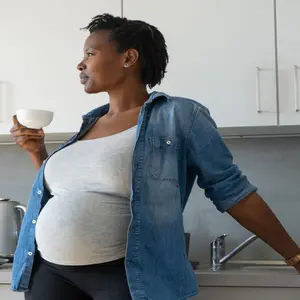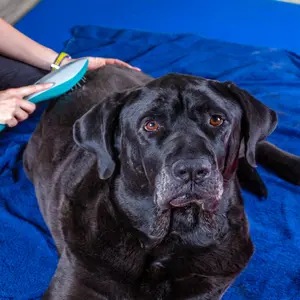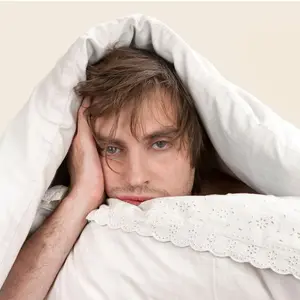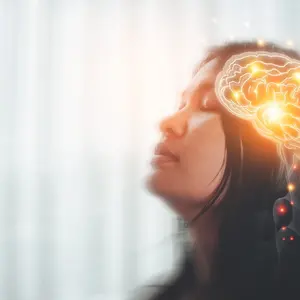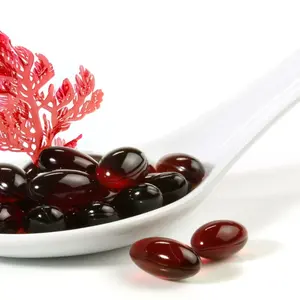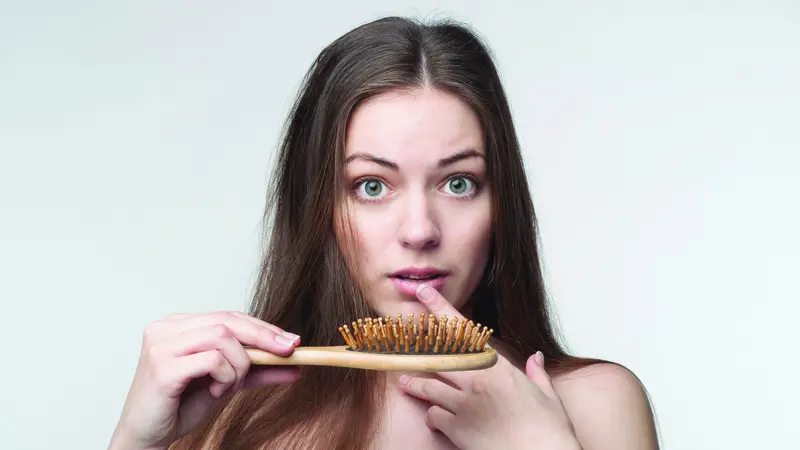
Healing Ways
Healing Ways
Reversing Hair Loss in Women: A Review of Systemic and Topical Natural Solutions
Hair loss among women can occur at any age for various reasons. However, 30 million Americans from 40 to 60 years old are affected by the most common form, female pattern hair loss (FPHL) or androgenetic alopecia. While it is considered normal to lose 50 to 100 hairs daily, individuals with FPHL notice excessive shedding of 125 or more, as well as an increasingly wider part, progressive thinning and reduced volume.
Because our society places so much emphasis on beauty and youth, hair loss can significantly impact a woman’s outlook and self-esteem. According to a 2023 study published in Dermatology Practical & Conceptual, people with FPHL are at a high risk of developing chronic stress, anxiety and depression
Although FPHL is primarily inherited, the contributing causes are highly individual and can include a number of other factors such as thyroid disease, vitamin deficiencies, hormonal imbalances, life transitions (pregnancy, postpartum and menopause), polycystic ovary syndrome, stress, anxiety and the use of chemical-laden haircare products. Because of this complexity, there is no one-size-fits-all solution, but if left untreated, FPHL can lead to permanent hair loss.
While U.S. Food and Drug Administration-approved over-the-counter topical treatments like minoxidil (generic Rogaine) have shown promising results in promoting hair growth, several side effects, such as facial hair and irregular heartbeat, have been reported by the Mayo Clinic, prompting women to seek alternative options.
To that end, Dr. Mark J. Tager, author of Feed Your Skin Right: Your Personalized Nutrition Plan for Radiant Beauty, offers hope, affirming, “Once the root cause is identified—whether it’s a hormonal imbalance, thyroid dysfunction, chronic stress or a nutrient deficiency—hair regrowth is absolutely possible.”
Systemic Solutions
“Hair is not essential for survival, so when something is off internally, the body prioritizes vital organs, leaving hair follicles undernourished and struggling to stay in the growth phase,” explains Tager. “At its core, hair loss is just the body’s way of asking for balance.”
When it comes to hair-supportive supplements, separating fact from hype can be challenging, but the popular supplement Nutrafol has demonstrated promising results. A 2022 study published in the Journal of Clinical and Aesthetic Dermatology evaluated the effectiveness of Nutrafol on male and female pattern baldness. Of the 51 participating premenopausal women with mild-to-moderate hair loss, 79.5 percent experienced significant improvements after 24 weeks of taking a daily Nutrafol women’s formula that contained amino acids, collagen, herbs and vitamins. Researchers concluded that the nutraceutical was effective in improving visible hair growth, volume, thickness, fullness and coverage with less noticeable hair shedding.
To restore the hair’s glory, Cleveland Clinic dermatologist Dr. Shilpi Khetarpal recommends taking a balanced multivitamin every day. Vitamin C promotes collagen production and can help individuals mitigate stress and the elevated cortisol levels that follow. Excessive cortisol promotes inflammation, which can disrupt cell signaling in hair follicles and cause an imbalance between estrogen and testosterone.
“Adequate levels of ferritin, the body’s stored form of iron, are crucial for healthy hair growth. Without enough iron, hair follicles struggle to stay in the anagen (growth) phase, leading to increased shedding and slow regrowth,” says Tager, adding, “Inositol, a natural sugar found in a number of forms, can help regulate hormone levels, most notably dampening the androgens that lead to hair loss.”
According to Jolene Hart, a certified health coach and author of Eat Pretty, maintaining good gut health and nutrient absorption are essential for achieving healthy hair. She notes that tahini, shellfish, spinach, beans and pastured eggs are excellent iron sources, especially when paired with vitamin C for enhanced absorption.
Hart also champions the importance of protein, asserting, “If your hair is breaking easily, growing slowly or looking thin, check on your intake of protein, the number one dietary must-have for healthy hair, as it’s the building block of keratin protein, which gives structure to each hair shaft.”
For those that are not allergic, Hart recommends nettle tea due to its anti-inflammatory properties and the presence of micronutrients like silica that support strong hair. Nettle tea also has the ability to block dihydrotestosterone (DHT), a hormone that can contribute to hair loss.
Topical Treatments
A small study published in the peer-reviewed journal Cannabis examined the effects of a topical hemp-oil formulation containing approximately three to four milligrams of cannabidiol and minimal amounts of other cannabinoids on 35 adults with patterned hair loss. Over the course of six months, all of the participants experienced some regrowth. On average, there was a statistically significant 93.5 percent increase in hair density. Notably, no adverse effects were reported during the treatment period.
Rosemary oil massaged into the scalp is an age-old practice gaining renewed attention for rejuvenating tired hair follicles. Trina Felber, a clean beauty and health specialist and author of Beauty’s Dirty Secret, recommends mixing a few drops of rosemary essential oil with a carrier oil like jojoba or argan oil and massaging it into the scalp. After 30 minutes, the mixture can be rinsed out.
Felber also recommends applying fresh aloe vera gel directly to the scalp and leaving it on for 20 to 30 minutes before rinsing with lukewarm water. Alternatively, castor oil can be applied overnight, as it contains ricinoleic acid, a natural compound that supports hair follicle health and enhances scalp circulation.
Felber cautions, “If you’re still using toxic shampoos, endocrine-disrupting hair products and exposing your scalp to chemicals, you’re working against your body, rather than with it.” Her “dirty” list includes two culprits: parabens, which are preservatives that mimic estrogen in the body, leading to hormone imbalances and hair thinning; and phthalates, often labeled as “fragrance” or “parfum”, which are known endocrine disruptors linked to hormonal imbalances that can contribute to hair loss and even metabolic dysfunction.
Marlaina Donato, an author, painter and composer, can be reached at WildflowersAndWoodSmoke.com
Original article published at Natural Awakenings National

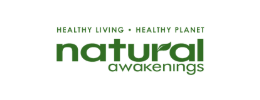
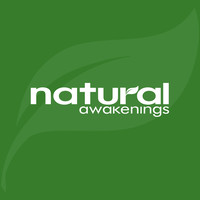 By
By
